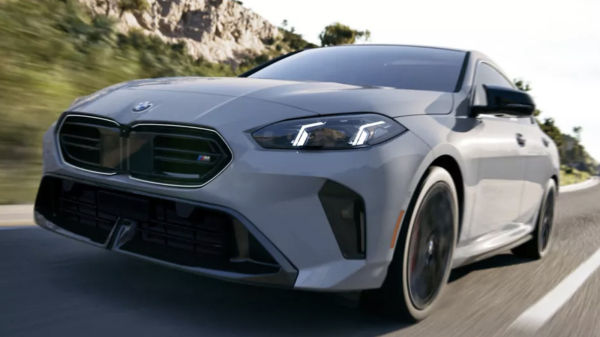The xDrive, BMW’s all-wheel drive (AWD) system, has refined the art of improving traction and stability in various driving conditions. Introduced in 2003 on models like the BMW X3 (E83) and the facelifted BMW X5 (E53), the xDrive system took AWDs to a whole new level with technology controlled by an electronically actuated clutch-pack differential to adjust torque dynamically. Evolving from the classic rear-wheel-drive setup, the xDrive has undergone several improvements, turning it into an all-wheel drive system that is more efficient and lighter than rival systems from Mercedes and Audi.
Advertisement
Unlike traditional AWD systems, the xDrive responds in real-time to driving conditions. This allows drivers to confidently tackle icy mountain passes, light off-road trails, or wet city streets. Available in a wide range of models — like the sporty 5 Series sedan and the robust X5 SUV — this AWD offers an enjoyable ride on any surface and increases safety during adverse weather conditions. But what makes the xDrive stand out among top AWD systems, and how does it work?
How the xDrive works
At its core, the xDrive technology is a full-time all-wheel drive that’s designed to respond to changing road conditions and dynamically adjust itself, giving you a more versatile driving experience. The system consists of an electronic stability control, which uses sensors to monitor wheel speed, steering angle, brake force, and throttle input. Another part of the xDrive is the Dynamic Stability, which uses sensors to detect slippery surfaces and loss of grip.
Advertisement
The AWD uses this collected data to adjust torque distribution between the front and rear axles in real time. Typically, the xDrive splits power in a 40:60 ratio, a proportion that favors the rear wheels to maintain BMW’s signature handling. However, when the system detects a loss of traction in, say, rainy conditions, the xDrive can route all the engine’s power to one axle, giving you maximum control in any situation.
Besides the torque distribution, a key element in the xDrive is an electronically controlled multi-plate clutch. Located between the gearbox and driveshaft, the clutch manages torque delivery. Unlike traditional AWD or more mechanical 4WD setups, the xDrive doesn’t rely on a center differential. Instead, it employs BMW’s Dynamic Stability Control (DSC) for dynamic torque distribution. Upon detecting oversteer or understeer, the xDrive works with the DSC to stabilize the car by applying the right torque or braking to specific wheels. For instance, if the vehicle begins to oversteer, the system sends more power to the front wheels.
Advertisement
xDrive vs. competitors
The BMW xDrive stands out as one of the most unique all-wheel drive setups, thanks to its use of the Dynamic Stability Control system, traction control, and smart torque distribution. A combination of these features makes the xDrive stand out from competitors like Audi’s Quattro all-wheel drive system. Another interesting part of the xDrive is the data-driven performance, where it uses data collected from the brake force and gas pedal to help the vehicle react properly to road conditions.
Advertisement
Audi’s Quattro utilizes longitudinally mounted engines and Torsen center differentials, as opposed to a clutch pack like the xDrive. While both all-wheel drive systems offer a rear-biased torque split, the Quattro is heavy, which affects performance. Also, unlike the xDrive, the Quattro comes in a difficult package as it lengthens the powertrain. Since the engine is slung out in front of the axles, Audi vehicles become front-heavy. However, one of the features that make the Quattro, so special is the mechanical simplicity, while delivering a versatile performance. On the other hand, Mercedes-Benz’s 4MATIC system focuses on comfort and balanced driving.
BMW models equipped with the xDrive
As mentioned, BMW’s xDrive is featured in a diverse range of models. In the sedan and coupe lineup, the xDrive is available in models like the 3 Series, 4 Series, 5 Series, and the top-of-the-line 7 Series. The system is also offered in the brand’s sportier M models, such as the M340i xDrive and M550i xDrive. More cars benefiting from the xDrive are BMW’s Sports Activity Vehicles (SAVs) and Sports Activity Coupes (SACs), which range from the entry-level X1 to the flagship X7.
Advertisement
The system has real-time torque distribution that improves stability on off-road situations, such as loose gravel, muddy trails, or steep inclines. On those uneven terrains, the multi-plate clutch works more dynamically compared to a flat road. If the rear wheels lose grip while climbing a slope, the xDrive sends power to the front wheels to keep you going higher. In BMW’s newest feature update, drivers can control the xDrive system through selectable driving modes, which allows them to tailor the car’s handling and torque distribution to suit specific road conditions.









